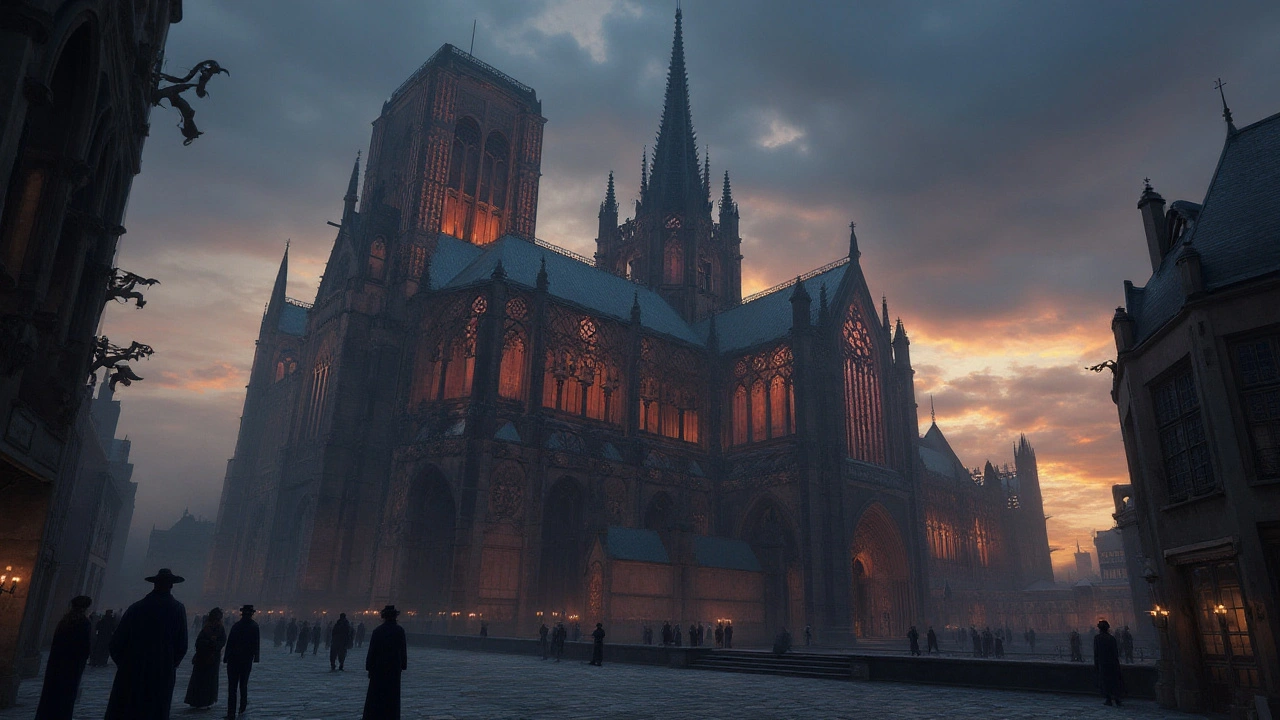Medieval art still surprises: a stained-glass window was a 15th-century data dashboard, teaching Bible stories to people who couldn't read.
If you love dramatic architecture, religious imagery, and craft that blends beauty with message, medieval art is rich and direct.
Start with the big forms. Gothic cathedrals stretch your eye upward with pointed arches, ribbed vaults, and flying buttresses. Those features aren't just dramatic — they let buildings reach higher and hold more light. Look for tall, narrow windows filled with colorful glass and sculpted portals crowded with figures. Those details tell stories about saints, local rulers, and everyday life.
Manuscripts are a different kind of show. Illuminated pages pair calligraphy with tiny painted scenes, gold leaf, and bold color. Monks and workshops used natural pigments — lapis for blue, red from insects — and each page was meant to slow you down. When examining a manuscript, check the marginalia: small drawings in the margins often reveal jokes, politics, or notes about who owned the book.
Materials and color matter. Medieval artists worked with tempera, egg-based paint, and mixed stone or wood panels. Metalwork and textiles also show high skill: reliquaries, embroidered vestments, and carved altarpieces were made to last and to draw attention. If a piece still shines after centuries, that was intentional — durability and visual impact mattered.
Iconography keeps things clear. Medieval images use set symbols so viewers could read scenes fast. A lamb can mean Christ, while a book often marks a scholar or saint. Learning a few common symbols makes medieval art much easier to read and more fun to explore in museums or churches.
Want practical tips for using medieval style today? Start small: a framed page print, a brass candlestick, or a rug with a repeating medieval pattern adds mood without overwhelming a room. Mix dark woods and heavy textiles with one bright element—stained-glass tones or a gilded mirror—to avoid feeling like a museum.
For collectors and curious visitors, check provenance and condition first. Manuscript fragments and carved pieces often have repairs. Ask about restoration history and whether pigments have faded or been retouched. A trained conservator's note is gold when buying older pieces.
Where to see great examples? Cathedrals like Chartres and York still show original glass and sculpture. Many national museums hold illuminated manuscripts and reliquaries. If you want hands-on learning, look for workshops or short courses in iconography or manuscript techniques; they teach both technique and history.
Medieval art feels close to people because it mixes craft, story, and a clear purpose. Learn a few symbols, notice materials, and you'll start spotting medieval traces in places you least expect—fashion, film sets, and even modern interiors.
Want to read more? Start with guides on Gothic architecture, illuminated manuscripts, and medieval symbolism. Local university libraries and museum catalogues often offer free PDFs. When visiting, bring a notebook and sketch small details — drawing helps you remember iconography and materials. Small choices make medieval art feel useful, not distant. Ask guides questions; they often share hidden stories daily.


